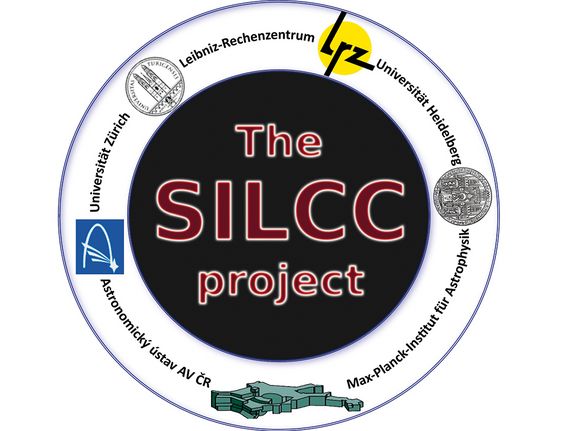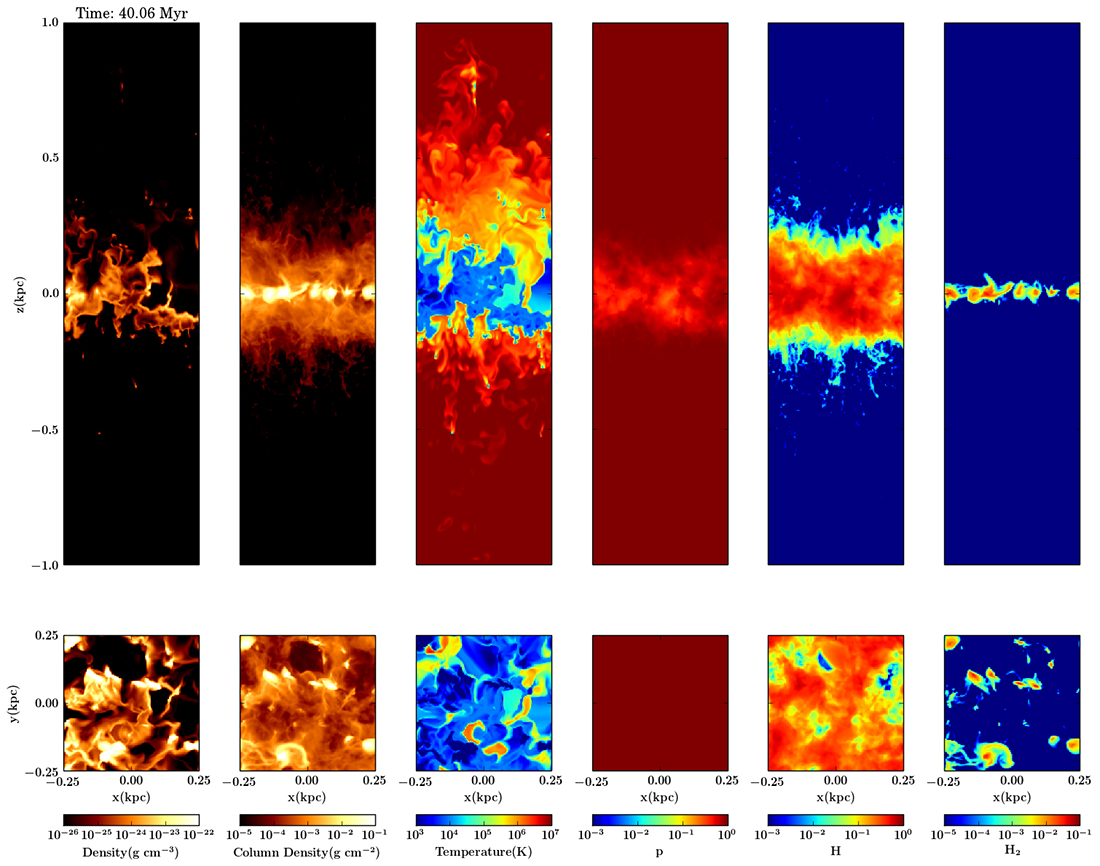ASTROPHYSICS
Simulating the Life Cycle of Molecular Clouds
Principal Investigator:
Stefanie Walch
Affiliation:
Universität zu Köln (Germany)
Local Project ID:
pr62su
HPC Platform used:
SuperMUC of LRZ
Date published:
A European team of scientists from Cologne, Garching, Heidelberg, Prague and Zurich used GCS HPC resources to model representative regions of disk galaxies using adaptive, three-dimensional simulations at unprecedented resolution and with the necessary physical complexity to follow the full life-cycle of molecular clouds. They aim to provide a self-consistent answer as to how stellar feedback regulates the star formation efficiency of a galaxy, how molecular clouds are formed and destroyed, and how galactic outflows are driven.
Star formation takes place in the densest and coldest gas in a galaxy, in so-called molecular clouds (MCs). MCs do not evolve in isolation but are highly dynamical objects, which are born, fed, heated, and stirred from their turbulent environment into which they eventually dissolve. They form in regions where the hot or warm, ionized and atomic interstellar medium (ISM) condenses into cold (T< 300K), molecular gas. Often concentrated to the midplane of galactic disks, this process involves metallicity-dependent, non-equilibrium chemistry and molecule formation, heating and cooling, turbulence, self-gravity, and magnetic fields. Once formed, MCs further collapse to form stars and star clusters.
Less than 1% of all new-born stars are more massive than 8 solar masses, but these are particularly important for galaxy evolution. The life and death of massive stars differ intriguingly from those of their low-mass counterparts. Such stars affect their environment dramatically through their strong UV radiation, their energetic stellar wind, and their final explosion as a supernova (SN). These ’feedback’ processes generate turbulence in the parental molecular cloud, dissociate, ionize, and eventually destroy them from within, thereby preventing further star formation. Stellar feedback is thus thought to regulate the star formation efficiency in molecular clouds leading to a self-regulation of star formation on galactic scales.

In the framework of the Gauss project “SILCC” (Simulating the Life Cycle of Molecular Clouds) run on petascale system SuperMUC of the Leibniz Supercomputing Centre, scientists from from Cologne, Garching, Heidelberg, Prague and Zurich model representative regions of disk galaxies using adaptive, three-dimensional simulations at unprecedented resolution and with the necessary physical complexity to follow the full life-cycle of molecular clouds. These simulations include self-gravity, magnetic fields, heating and cooling at different gas metallicities, molecule formation and dissociation, and stellar feedback in form of stellar winds and supernovae. The ultimate goal of the SILCC project is to provide a self-consistent answer as to how stellar feedback regulates the star formation efficiency of a galaxy, how molecular clouds are formed and destroyed, and how galactic outflows are driven.

Projections and slices through the y=0 (top) and z=0 (bottom) planes of a disk with 30 Msun/pc2, which was stirred by randomly placed SNe for 40 Myr. The SNR is 19 Myr-1. Shon from left to right is a density slice, the total column density, and slices of gas temperature, and the fractional abundances of ionized hydrogen, atomic hydrogen, and molecular hydrogen.
Copyright: Universität zu Köln, I. Physikalisches Institut
Full article in inSiDE, Vol. 11 No. 2
https://www.astro.uni-koeln.de/node/794
Prof. Dr. Stefanie Walch
Universität zu Köln, I. Physikalisches Institut
Zülpicherstr. 77, D-50937 Köln/Germany
e-mail: walch@ph1.uni-koeln.de